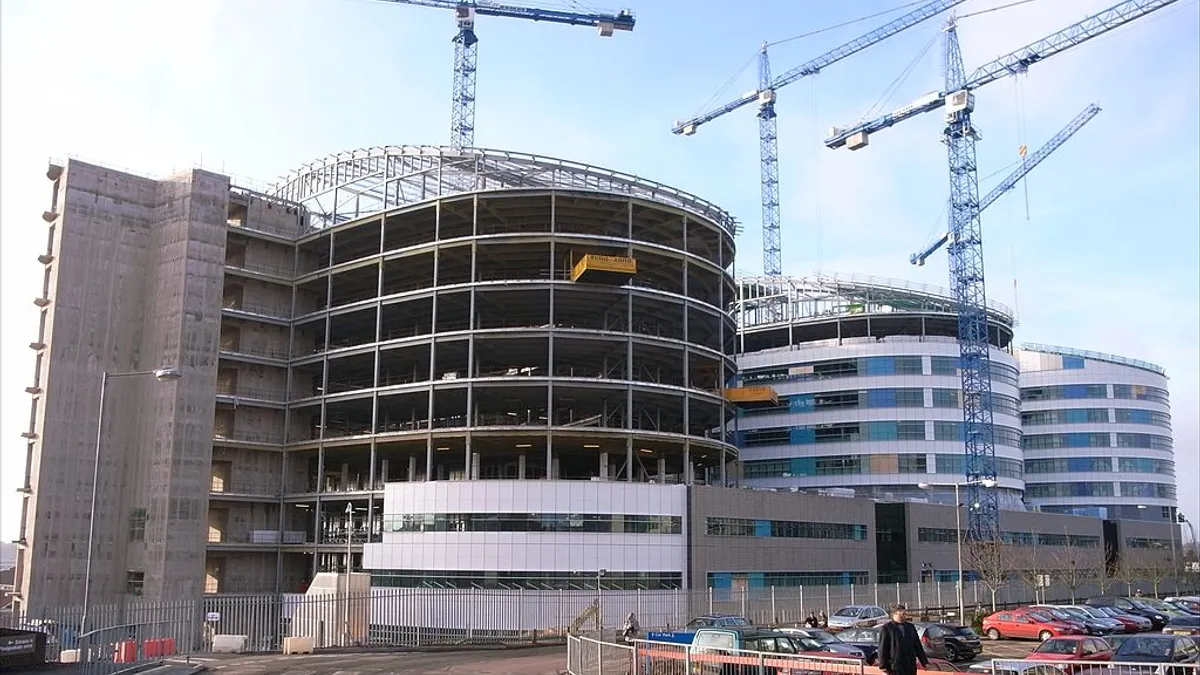Dive Brief:
- Construction spending fell 1.8% in April to a seasonally adjusted annual rate of $1.13 trillion, down from the revised rate of $1.16 trillion in March, the Commerce Department reported Wednesday.
- Both private residential and nonresidential construction spending slipped 1.5% in April. Within residential, multifamily tumbled 3.1%, and single-family remained unchanged once again. Public construction plunged 2.8% last month.
- April construction spending was 4.5% higher than April 2015, and spending in the first four months of 2016 was 8.7% higher than the same period last year.
Dive Insight:
April's spending results came in far below expectations, as economists surveyed by Reuters forecast a 0.6% rise. However, the department's significant change in the March spending numbers — revising the month's figures from a 0.3% gain to a 1.5% surge — demonstrates the volatility of the statistic.
Last month's drop marks the largest decline in construction spending since January 2011, according to Reuters. The disappointing results came after strong reports from other sectors of the U.S. economy, including consumer spending and home sales. The steady results for single-family residential spending and the dip in multifamily reinforces predictions that single-family will outpace multifamily this year.
Nonresidential and public construction spending have seen ongoing slides in recent months. However, the most recent Dodge Momentum Index inched up 0.6% in April, largely due to increased planning for commercial and industrial projects. That rise in the index could forecast a coming rebound for the nonresidential sector.
April marked an unexpectedly strong month for housing, reinforcing economist predictions that 2016 will be housing's "best year in a decade." Housing starts last month rose 6.6% to a 1.172 million annualized rate, existing home sales inched up 1.7%, new home sales soared 16.6% to an eight-year high, and pending home sales climbed 5.1% to a 10-year high.












